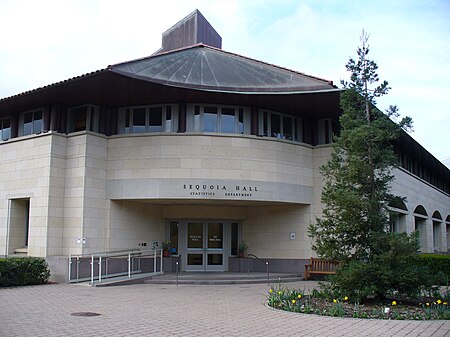Stanford Memorial Church (also referred to informally as MemChu) is located on the Main Quad at the center of the Stanford University campus in Stanford, California, United States. It was built during the American Renaissance by Jane Stanford as a memorial to her husband Leland. Designed by architect Charles A. Coolidge, a student of Henry Hobson Richardson, the church has been called "the University's architectural crown jewel".Designs for the church were submitted to Jane Stanford and the university trustees in 1898, and it was dedicated in 1903. The building is Romanesque in form and Byzantine in its details, inspired by churches in the region of Venice, especially, Ravenna. Its stained glass windows and extensive mosaics are based on religious paintings the Stanfords admired in Europe. The church has five pipe organs, which allow musicians to produce many styles of organ music. Stanford Memorial Church has withstood two major earthquakes, in 1906 and 1989, and was extensively renovated after each.
Stanford Memorial Church was the earliest and has been "among the most prominent" non-denominational churches on the West Coast of the United States. Since its dedication in 1903, the church's goal has been to serve the spiritual needs of the university in a non-sectarian way. The church's first chaplain, David Charles Gardner, began a tradition of leadership which has guided the development of Stanford University's spiritual, ethical, and academic relation to religion. The church's chaplains were instrumental in the founding of Stanford's religious studies department, moving Stanford from a "secular university" at the middle of the century to "the renaissance of faith and learning at Stanford" in the late 1960s, when the study of religion at the university focused on social and ethical issues like race and the Vietnam War.









